© Use of content without authorization is prohibited
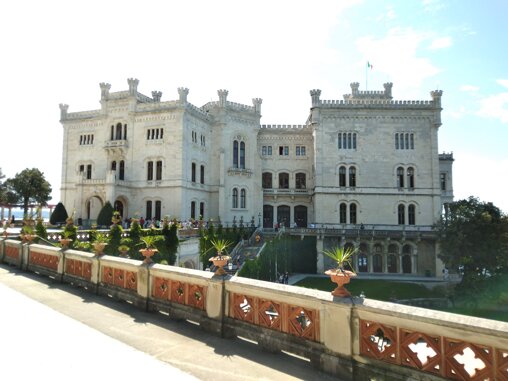
Friuli Venezia Giulia
Gorizia Pordenone Trieste Udine
A border region that makes you feel like a frontier man. Every time I have been there, starting from my military service, I encountered the strong wind coming from the east, and every now and then, when I least expect it, it comes back to my mind. The wide golden beaches of Lignano Sabbiadoro or Grado, the Trieste Karst with its deep caves, Carnia with its wild landscapes, the Friulian Dolomites, are just a few examples of the spectacular things this territory can offer. Friulian cuisine suits my tastes: Boreto Gradese with polenta, Pasta with Razor Clams, and among the desserts not to be missed, Gubana. Friulian wines are excellent: among the whites, in my humble opinion, we have the number one in the world which is Ribolla Gialla in the sparkling version; among the reds, the Refosco from the Udine area is excellent.

Province of Gorizia
Area: 467.14 km² Municipalities: 25
travel stories...
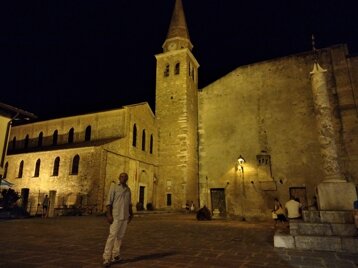

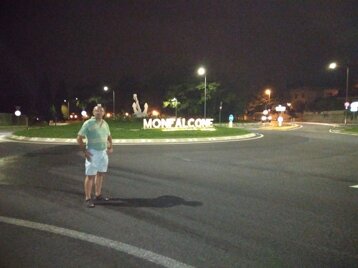
Grado:Historic Center
Grado: the Lagoon and the Beach
Monfalcone
Especially in the evening, I discovered that this small town surrounded by water is not just sea and lagoon. It is also a historic center with its ancient churches and gastronomy with its numerous restaurants always crowded despite the strict distancing rules imposed by the covid19 pandemic. Strolling along its wide avenues in search of a place to satisfy my appetite, I pass by street artists who, in exchange for a small offering, cheer the hearts of passersby. I reach the Castrum, a nucleus of narrow alleys reminiscent of the ancient fortress. Here I find myself in front of the Basilica of Sant'Eufemia, a paleochristian architecture from the 5th century illuminated by soft light. This magical evening was supposed to continue in a tavern where I was eager to taste Boreto, a local fish soup with polenta; exquisite, even though the abundant pepper as per the traditional recipe meant that half a liter of prosecco was barely enough. This holiday in Grado could not end without a souvenir purchased in one of the many shops run by German-speaking merchants, an anchor-shaped alarm clock.
Coming from Grado, after crossing the Isonzo river, I arrived in this port town that is the birthplace of two of my favorite artists: the singer-songwriter Gino Paoli and the singer-songwriter Elisa. I parked near the port, which is especially famous for its shipbuilding; cruise ships are also built here. From there, my first stop was at the Cathedral of Sant'Ambrogio, a church rebuilt in Gothic style after its destruction during the First World War; the facade with the mosaic depicting Saint Ambrose stands out in particular. Not far away, I reached Piazza della Repubblica, the beating heart of the city and the location of the town hall; at the end of the square, an imposing staircase leads to the upper part of the city. Continuing to climb, you enter a small wooded hill at the top of which stands the Rocca, a medieval fortress of Ostrogothic origin. From up there, the view is spectacular: the Lion of Saint Mark and I, standing at the entrance to the castle, gaze out over the Adriatic Sea, scanning the horizon in case enemy ships should appear.
In the year of a terrible pandemic, when due to staff shortages I had worked incessantly, I needed a peaceful holiday, and this ancient fishing village was just what I needed. Grado is situated between the Lagoon and the Adriatic Sea, and is connected to the mainland by a very long and picturesque bridge. My hotel room faced north, towards the lagoon, whose shallow waters reveal numerous islands. I spent relaxing afternoons under the beach umbrella in this place rightly called "the Golden Island," so named for its beaches of the finest golden sand. The main beach was not free but could be accessed through a gate (which was closed in the evening) after paying an entrance fee; I usually prefer free beaches but this time I appreciated the impeccable services of these beach resorts and this feeling of "exclusivity." The sea was clean and the seabed was shallow for over a hundred meters, suitable even for those who cannot swim.

Province of Pordenone
Area: 2275.14 km² Municipalities: 50
Pordenone: Town Hall, Gothic building from the 13th century
Pordenone: Town Hall, Gothic building from the 13th century
travel photos...
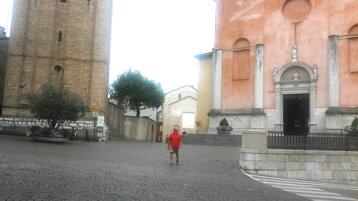
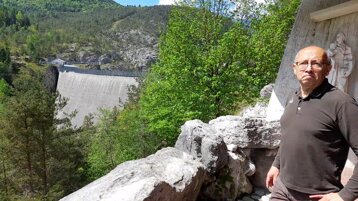
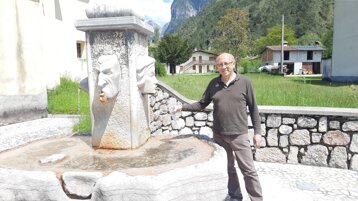
Pordenone
Erto and Casso
Cimolais
Co-cathedral of St. Mark the Evangelist
Vaiont Dam
Fountain in the courtyard of the Church of San Floriano
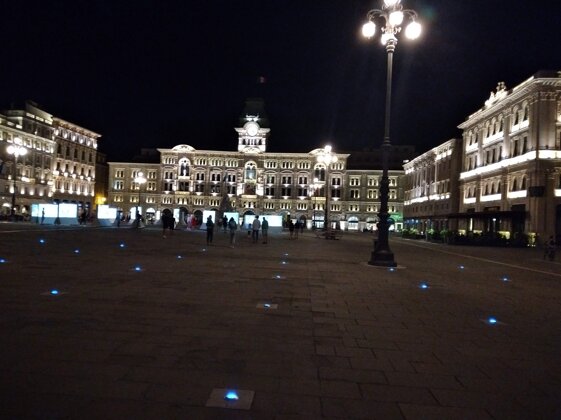
Province of Trieste
Area: 212.51 Km² Municipalities: 6
travel stories...
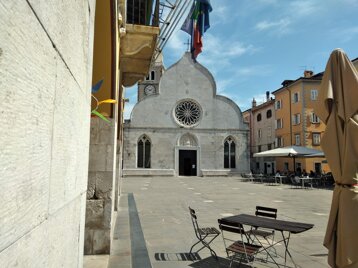


Muggia
Miramare Castle
Trieste
There is a bit of a line to access the paid parking, but it allows you to leave your car in a guarded area very close to the entrance. The first impression is breathtaking; a magnificent castle perched over the sea in neo-Gothic style, built in white stone. I immediately decide to visit the interior. Every room in the palace is perfectly preserved, and every piece of furniture recalls Maximilian, Archduke of Austria, and his wife Charlotte, Princess of Belgium, who had this castle built in 1856. In every room there are portraits of historical figures from that era, but my favorite room is number 5 because of a beautiful papier-mâché and wooden globe, an object that has always held an irresistible fascination for me. Going out to the back of the palace, the view over the Gulf of Trieste is enchanting. A walk in the immense park surrounding the castle with the green of the splendid gardens and the blue of the sea below. The last hour was dedicated to visiting the exhibition on advertising by the artist Dudovich, with posters created for some well-known products including Campari.
On my way to Slovenia, I stopped in this fishing village just a few kilometers from the state border. By mistake, I took the very narrow, steeply climbing roads of old Muggia. From up there, I could see the whole gulf, with the port of Trieste in the foreground. I went back down and, after leaving my car near the bus station, I crossed the main square, where the Town Hall and the Cathedral with its white stone façade dedicated to Saints John and Paul are located. A walk through the semi-deserted alleys, on this sultry August day, and finally I found a seat outside an ice cream shop in front of the small harbor. There, while observing the variety of moored boats, I refreshed myself with a granita and a fruit salad. I returned to the car passing through some characteristic alleys full of little shops and colorful houses. A few more minutes to breathe in the smell of the sea and capture this place in my memory, and I was ready to resume my journey.
I had always dreamed of visiting this city. I parked near the Salone degli Incanti, passed the Aquarium, and had my picture taken under the statue of Nazario Sauro, Commander of the Royal Navy and Patriot. A little further on, I arrived at the long-awaited place: Piazza Unità d'Italia, the only Italian square that ends directly on the sea. Every side is interesting: on the left, the Prefecture Palace, historic seat of the Austrian Lieutenancy; in front, the Town Hall recognizable by the Clock Tower, with the beautiful Fountain of the Four Continents in front; on the right side, the nineteenth-century Palace of the Regional Council of Friuli Venezia Giulia with two magnificent statues on the sides; and finally, behind, the side overlooking the Adriatic Sea, which makes it unique, special. A walk uphill to the Cathedral of Saint Justus Martyr; not far away at the top of the hill, I visited the Castle of San Giusto with its interesting Weapons Museum. A posed photo behind the cannon and it was getting late. As darkness fell, the wind picked up, typical of these places, and it was time to retreat to a typical osteria where they served me pasta with razor clams that was finger-licking good.

Province of Udine
Area: 4969.30 km² Municipalities: 134
Aquileia: Patriarchal Basilica
Aquileia: Patriarchal Basilica
travel photos...
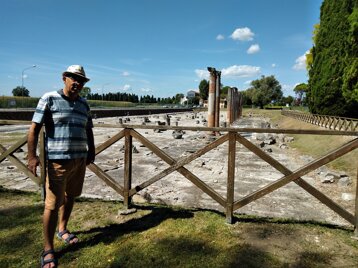


Lignano Sabbiadoro
Aquileia
Palmanova
Downtown by night
Archaeological site; colonnade of the Roman Forum
Interior of the Loggia della Gran Guardia